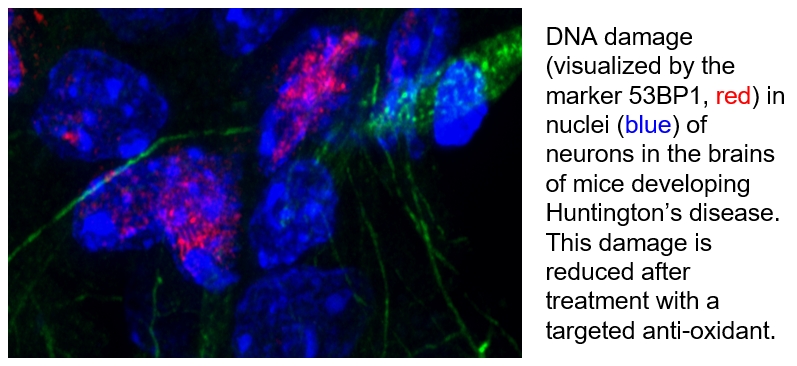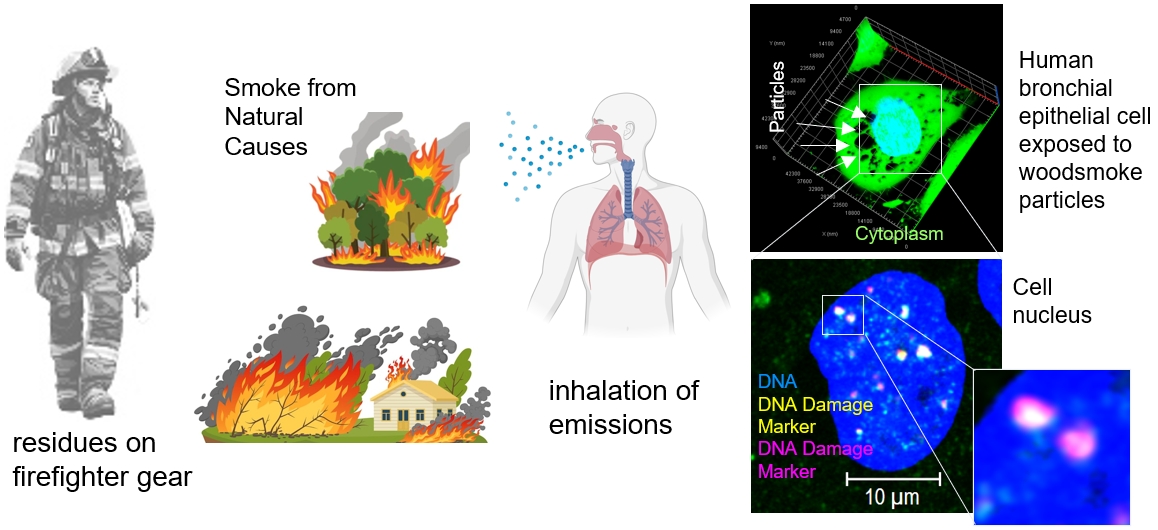Aris Polyzos
Biochemist Research Scientist
Research Interests
HUNTINGTON’S DISEASE
 Huntington’s Disease (HD) is one of the longest studied hereditary diseases. The cause has long been known; it has been tracked down to an inherited defect in a single gene (huntingtin). There is also a good understanding of the process leading to this genetic mutation (a trinucleotide repeat expansion). But how this mutated gene leads to the progressive breakdown of nerve cells in the brain is yet to be understood. In our study of the progression of HD, we have recently focused on metabolic effects that HD has in the brain. This altered metabolism has consequences on the oxidative load generated in the brain, which increases along with genetic damage to neural cells. This work might be an important insight into HD neurodegeneration, and provides potential therapeutic strategies to target increased oxidative load in the brain.
Huntington’s Disease (HD) is one of the longest studied hereditary diseases. The cause has long been known; it has been tracked down to an inherited defect in a single gene (huntingtin). There is also a good understanding of the process leading to this genetic mutation (a trinucleotide repeat expansion). But how this mutated gene leads to the progressive breakdown of nerve cells in the brain is yet to be understood. In our study of the progression of HD, we have recently focused on metabolic effects that HD has in the brain. This altered metabolism has consequences on the oxidative load generated in the brain, which increases along with genetic damage to neural cells. This work might be an important insight into HD neurodegeneration, and provides potential therapeutic strategies to target increased oxidative load in the brain.
INFRARED SPECTROSCOPY IMAGING FOR BIOLOGY
 The chemical features common to molecules in living cells have vibrational energies that are within the Infrared (IR) energy range and every biomolecule in a cell has a distinct absorption spectrum in the IR region. This means that if you could image a living cell across the IR spectrum you would, in theory, have a compilation reading of all it’s biomolecules, or a reading of the state of the cell. We are trying to develop and validate IR microscopy of cells and tissue as a tool that could be used for the characterization of disease. We are pursuing the design of new IR imagers based on novel concepts (such as fluorescently based photothermal IR spectroscopy, F-PTIR) that are amenable to imaging biological systems. These systems aid in the high resolution, sensitivity and ability to identify and localize biological features (such as cells in a tissue or microbes in a solution) while acquiring IR absorption spectra of living things.
The chemical features common to molecules in living cells have vibrational energies that are within the Infrared (IR) energy range and every biomolecule in a cell has a distinct absorption spectrum in the IR region. This means that if you could image a living cell across the IR spectrum you would, in theory, have a compilation reading of all it’s biomolecules, or a reading of the state of the cell. We are trying to develop and validate IR microscopy of cells and tissue as a tool that could be used for the characterization of disease. We are pursuing the design of new IR imagers based on novel concepts (such as fluorescently based photothermal IR spectroscopy, F-PTIR) that are amenable to imaging biological systems. These systems aid in the high resolution, sensitivity and ability to identify and localize biological features (such as cells in a tissue or microbes in a solution) while acquiring IR absorption spectra of living things.
HEALTH EFFECTS OF SMOKE EXPOSURES
 Exposures to smoke from burning vegetation (wildfires, woodland-urban-interface fires (WUI), etc.) is a natural hazard that has been increasing in the United States, which also increases the potential effects on the population. Understanding the long-term health ramifications of these exposures, including cancer and other disease effects, requires both epidemiological/clinical/real world and controlled laboratory studies. We are using laboratory models to study the cellular and tissue effects of wood combustion emissions to understand their carcinogenic and respiratory ramifications. We are also studying the toxicity and variety of exposures to combustion emissions that California firefighters in municipal fire services have. Specifically, we are looking at exposures through the residues that remains on gear after an incident response.
Exposures to smoke from burning vegetation (wildfires, woodland-urban-interface fires (WUI), etc.) is a natural hazard that has been increasing in the United States, which also increases the potential effects on the population. Understanding the long-term health ramifications of these exposures, including cancer and other disease effects, requires both epidemiological/clinical/real world and controlled laboratory studies. We are using laboratory models to study the cellular and tissue effects of wood combustion emissions to understand their carcinogenic and respiratory ramifications. We are also studying the toxicity and variety of exposures to combustion emissions that California firefighters in municipal fire services have. Specifically, we are looking at exposures through the residues that remains on gear after an incident response.
GENETIC DAMAGE
The genome codes the template for life; it stores this vast amount of information in strings of DNA. There are many intricate pathways that maintain the integrity of this information and repair DNA that is damaged. These pathways are a major area of scientific study. We are trying to develop tools to help elucidate the pathways that are activated after damage and understand the implications to the genome. These tools would allow us to target DNA damage (oxidation) to a single genetic site and pick out what proteins are part of the response.
Recent Publications
Related News
Unraveling the Mysteries of DNA Damage in the Brain
A first-of-its-kind study led by Cynthia McMurray and Aris Polyzos in the Molecular Biophysics and Integrated Bioimaging (MBIB) Division integrated cell type– and brain region–specific features of DNA repair in normal brains, setting a benchmark for the field. Their results, recently published in Nature Communications, suggest that DNA damage itself serves as the checkpoint, limiting the accumulation of genomic errors in cells during natural aging.
Biosciences FY25 LDRD Projects
The projects of 23 Biosciences Area scientists and engineers received funding through the FY25 Laboratory Directed Research and Development (LDRD) program.
Biosciences Area FY24 LDRD Projects
The projects of 21 Biosciences Area scientists and engineers received funding through the FY24 Laboratory Directed Research and Development (LDRD) program.




